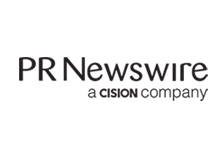AANP Spotlights Five Critical Health Care Trends to Watch
AUSTIN, Texas, Jan. 3, 2024 /PRNewswire/ -- The nurse practitioner (NP) profession is looking ahead to a new year and new opportunities to advance access to high-quality health care for patients. The American Association of Nurse Practitioners(®) (AANP) has identified five critical health trends that will impact the delivery of patient-centered health care in 2024 and beyond.
"As health care continues to evolve, nurse practitioners are at the forefront of change, consistently adapting to meet the dynamic needs of patients and their communities," said AANP President Stephen A. Ferrara, DNP. "Patients deserve access to high-quality health care nationwide, and NPs are urging other health care leaders and policymakers to prioritize policies that make health care more efficient and effective by making 2024 the Year of Patient-Centered Health Care."
The Top Five Health Care Trends of 2024.
1. More Than 102 Million People Now Live in Primary Care Shortage Areas -
According to the U.S. Department of Health and Human Services (HHS), more
than 102 million Americans across the nation currently lack adequate
access to primary care - a 3% jump from one year ago (99 million) - and
these shortages exist across urban, suburban and rural areas. NPs are
ready to address this challenge, with nearly 90% clinically trained to
deliver primary care. NPs represent 1 in 4 primary care providers in
rural practices, with an even greater percentage in the states that allow
them to practice to the full extent of their education and clinical
training.
2. Wait Times for Health Care Appointments are Growing - A national survey
conducted in 2023 found nearly 50% of patients polled waited longer than
one month -- and 25% waited more than two months -- for a health care
appointment in the previous 12 months. More than 40% of those polled
experienced a 'longer than reasonable' wait for health care - an
8-percentage point jump from the year before. According to the survey,
nearly half of those who experienced longer waits gave up before getting
the care they needed, ultimately going without care. This situation
extends across all major demographics, including age, gender and
education, and geographic areas, including rural, suburban and urban
settings.
3. Demand for Senior Care Continues to Rise - As the U.S. population,
including the massive baby boom generation of 73 million, ages and
requires more care, the health care workforce must also grow to meet
demand. By 2030, every baby boomer will be at least 65, with the oldest
members closer to 85 - meaning 1 out of every 5 Americans will be of
retirement age and qualified to enroll in the government's Medicare
program. Approximately 40% of Medicare beneficiaries currently receive
health care from NPs, the fastest-growing Medicare provider group.
Notwithstanding the care provided to this population, barriers still
exist within the Medicare program that prevent NPs from practicing to the
full extent of their education and clinical training; federal policy
changes are needed to make our system work more efficiently.
4. Primary Care Providers are Screening for Both Physical and Mental Health
- NPs and other primary care providers are at the forefront of patient
care, screening for both physical and mental health problems. Mental
health concerns have increased sharply in the wake of the COVID-19
pandemic, and nearly 169 million people live in areas where access to
treatment is limited due to provider shortages. Given their focus on
whole-patient care, NPs understand the important role mental health plays
in the overall well-being of their patients.
5. Demand for NPs Continues to Grow, as Does the Profession - NPs are in
high demand by patients for their exceptional, whole-patient care.
America's more than 385,000 licensed NPs conduct more than 1 billion
patient visits annually. The NP profession is trending to be the
fastest-growing profession of the next decade, according to the most
recent data from the U.S. Bureau of Labor Statistics, with the profession
projected to grow by nearly 45% by 2032.
The American Association of Nurse Practitioners(®) (AANP) is the largest professional membership organization for nurse practitioners (NPs) of all specialties. It represents the interests of the more than 385,000 licensed NPs in the U.S. AANP provides legislative leadership at the local, state and national levels, advancing health policy; promoting excellence in practice, education and research; and establishing standards that best serve NPs' patients and other health care consumers. As The Voice of the Nurse Practitioner(®), AANP represents the interests of NPs as providers of high-quality, cost-effective, comprehensive, patient-centered health care. To locate an NP in your community, visit npfinder.com. For more information about NPs, visit aanp.org.
View original content to download multimedia:https://www.prnewswire.com/news-releases/aanp-spotlights-five-critical-health-care-trends-to-watch-302024668.html
SOURCE American Association of Nurse Practitioners (AANP)



